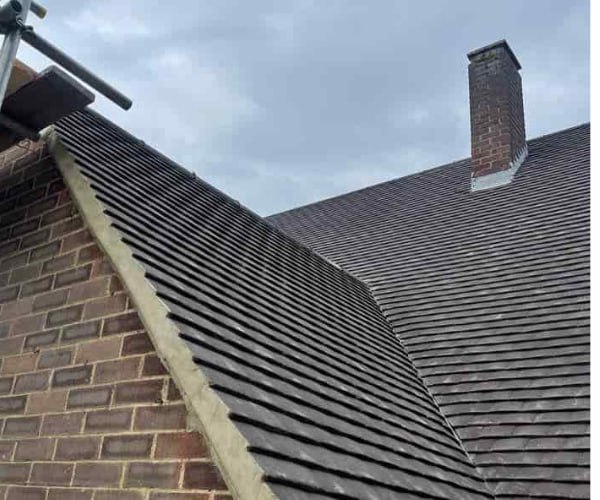Chimney Waterproofing: Preventing Water Damage
Introduction: Chimneys are a classic feature of many homes, providing warmth and character. However, they are also highly susceptible to water damage due to their exposed position on the roof. Over time, water infiltration can lead to various issues, from structural damage to chimney leaks and even mould growth inside your home. In this blog post, SCG Roofing Earls Barton will explore the importance of waterproofing and how it can safeguard your chimney and your home.
Understanding the Threat of Water Damage
Chimneys are particularly vulnerable to water damage for several reasons:
Masonry Absorption: The bricks and mortar in chimneys can absorb moisture, leading to cracks, spalling (surface flaking), and deterioration.
Freeze-Thaw Cycles: In colder climates, water penetrating the masonry can freeze and expand, causing further damage to the chimney’s structure.
Chimney Crown Issues: Damaged or improperly constructed chimney crowns can allow water to seep into the chimney structure.
Flashing Problems: Faulty chimney flashing or deteriorating sealant can create entry points for water.
The Benefits of Chimney Waterproofing
Chimney waterproofing, also known as chimney sealing or water-repellent application, involves applying a specialised product to the chimney’s exterior. This treatment offers several key advantages:
1. Prevents Water Infiltration:
The primary benefit of waterproofing is its ability to repel water, preventing it from seeping into the masonry and causing damage.
2. Extends Chimney Lifespan:
Waterproofing can significantly extend your chimney’s lifespan by protecting the bricks and mortar from moisture.
3. Preserves Aesthetics:
Waterproofing helps maintain the visual appeal of your chimney by preventing unsightly stains, efflorescence (white, powdery deposits), and spalling.
4. Minimises Freeze-Thaw Damage:
Waterproofing reduces water absorption, minimising the damage caused by freeze-thaw cycles.
5. Prevents Mold and Mildew:
Waterproofing helps prevent mould and mildew growth inside your home by keeping water out, which can pose health risks.
6. Improves Energy Efficiency:
A dry chimney is more efficient at venting smoke and gases, ensuring your heating appliance operates at peak performance.
Chimney Waterproofing Process
Chimney waterproofing is a straightforward process that involves the following steps:
1. Inspection:
A professional chimney technician will inspect your chimney for any existing damage, such as cracks or spalling, which may need repairs before waterproofing.
2. Surface Preparation:
The chimney’s exterior is cleaned to remove dirt, debris, and loose mortar. This ensures proper adhesion of the waterproofing product.
3. Application:
Brushes or sprayers apply A specialised waterproofing product to the chimney’s surface. The product penetrates the masonry, creating a water-repellent barrier while allowing the chimney to breathe.
4. Drying and Curing:
Depending on the manufacturer’s recommendations, the waterproofing product is allowed to dry and cure, typically for 24 to 48 hours.
5. Inspection and Cleanup:
After curing, the chimney is inspected for missed spots, and debris from the application process is cleaned up.
Conclusion: Chimney waterproofing is a cost-effective preventive measure that can save you from costly chimney repairs down the road. By protecting your chimney from water damage, you extend its lifespan and ensure the safety and functionality of your heating appliance. If you’re concerned about your chimney’s condition or have experienced leaks, consider contacting professionals like SCG Roofing Earls Barton. Their expertise in chimney waterproofing can help safeguard your home and chimney for years to come.
Call us on: 01604 261 699
Click here to find out more about SCG Roofing Earls Barton
Click here to complete our contact form and see how we can help with your roofing needs.

